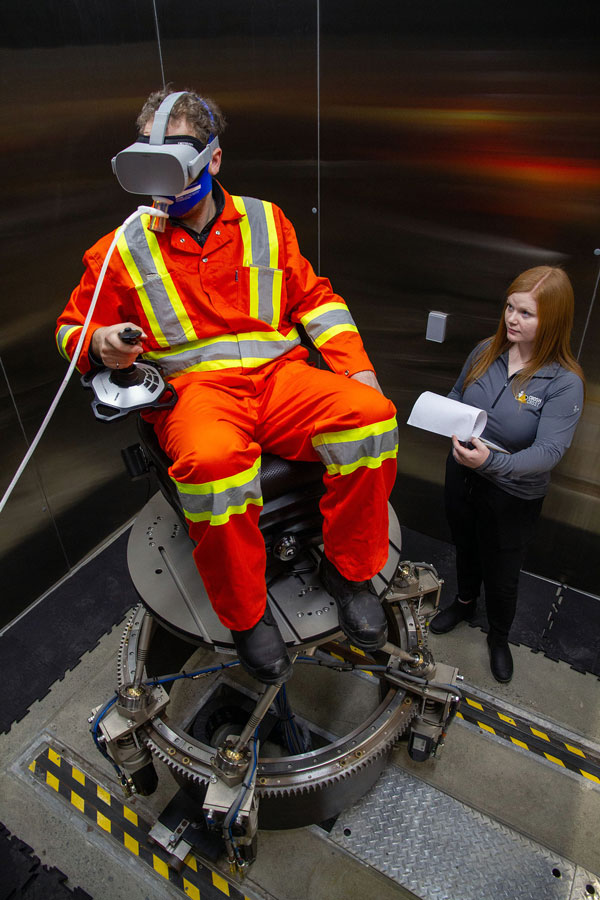A Laurentian University researcher has launched a new heat stress toolkit for outdoor workers that is designed to tackle the challenges of Ontario’s record-breaking summer heat.
The free toolkit was the product of significant tech-infused research.
Sandra Dorman, the director of the (CROSH) and a professor at Laurentian in Sudbury, created heat conditions in a workplace simulator that included a vibration platform within an environmental chamber.
Subjects with monitoring devices experienced temperature and humidity conditions similar to Ontario’s hot outdoor workplaces while Dorman and her team collected data.
The was launched in May with funding from the provincial government and other sources. Tools include a heat-stress awareness guide, heat-stress physiological monitoring guide and heat-stress prevention tools and strategies.
Information is presented through educational videos, a new heat-stress calculator, the reference guides, posters and infographics.
The Ministry of Labour issued a proposed new standard last year and Dorman serves on a number of the ministry’s occupational health and safety committees.
“Heat-stress was coming up as a priority issue for the 2023-2024 year,” she said.
“What I advocate is that people should be looking at, if they don’t already have, a heat-stress prevention program. I think the point of the toolkit is to help you expand or develop or give you new ideas for your prevention plan.”
Strategies include using wearable technology such as heart rate monitors and thermoregulation devices to track body temperature and hydration levels. The tools alert workers to take breaks and hydrate.
Wearable cooling devices and clothing are also mentioned as PPE but Dorman said, in her view, development has been slow and the PPE is not as efficient as it could be.
The monitoring devices that are being created suit athletes and others well but not much has been developed specifically for industry, Dorman said, with devices inadequately robust.
“Although absolutely you can accurately measure heart rate, and that is a good predictor of the heat event, it may not be a device that will work well in a workplace,” she said.

��������ion a priority group
“The guide is trying to prepare you for those problems and challenges.”
The construction sector is a key target group of the toolkit.
“I do think all the sectors, and construction being one of the priority sectors, are looking for new controls, new solutions,” said Dorman.
One of the tools being recommended is a refuge station for workers but Dorman said the construction sector has not yet figured out how best to implement that expensive solution, which involves creating a space where workers could take a cooling break. Bringing a cooling bus to a construction worksite is one possible option, she said.
Dorman said the toolkit builds on information the occupational health and safety community was already communicating about heat-stress, such as a long-established program created by the Occupational Health Clinics for Ontario Workers (OHCOW).
The CROSH toolkit can be downloaded from the OHCOW website.
“But they were missing things, and we had already gotten feedback as we were developing it, and even before, like, there were gaps in terms of long-term chronic illness,” she said. “Really, heat-stress is an occupational disease in addition to an acute injury, and nobody really talks about that.”
Dorman said an estimated 220 Canadians die annually from occupational heat-stress, and an estimated 15 per cent of workers who frequently work under heat-stress develop a heat illness, often kidney disease.
Other possible illnesses arising from heat include brain damage and cardiovascular problems.
“We’re seeing more cases of kidney disease 10 years, 15 years after they’ve been doing prolonged heat-stress jobs,” she said. “One paper estimates that if you’re doing about six hours of hot work a day for two months a year, 15 per cent of that workforce is getting kidney disease later on.”
Climate statistics made updating the toolkit an imperative.
Average summer temperatures in Ontario having risen by 1.5 to 2.0 C since the mid-20th century and the frequency of extreme heat days (exceeding 30 C) is now at nine per year in some regions of the province.
Follow the author on X/Twitter @DonWall_DCN






Recent Comments
comments for this post are closed